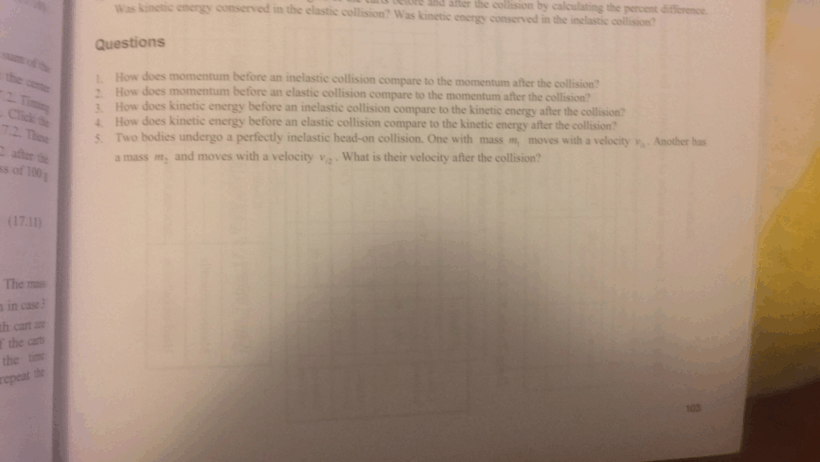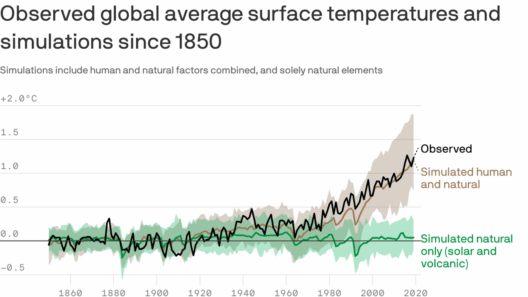In the realm of physics, particularly in the study of mechanics, the notion of conservation of energy plays a pivotal role in understanding the dynamics of motion. Among various types of collisions, perfectly elastic collisions present a fascinating case wherein the principles of kinetic energy conservation come into play. Such events are foundational in both theoretical and applied physics, with implications that resonate throughout mechanics, engineering, and even environmental science. This exploration seeks to elucidate the intricacies of whether kinetic energy is conserved in a perfectly elastic collision, a concept that promises to deepen one’s comprehension of both classical mechanics and the broader universe.
To embark on this discourse, one must first establish what constitutes a perfectly elastic collision. In essence, this type of collision is characterized by two principal features: the conservation of momentum and the conservation of kinetic energy. These collisions occur between two objects that do not undergo deformation or generate heat—attributes not commonly observed in everyday experiences. For instance, imagine a pair of billiard balls striking each other on a pool table; if they collide in such a manner that neither ball changes shape or loses energy to heat or sound, then we can categorize this collision as perfectly elastic.
The underlying physical principles dictating this behavior can be encapsulated using the laws of conservation. In any isolated system where no external forces act, the total momentum before the collision equals the total momentum after the collision. Mathematically, this is expressed as:
M1V1 + M2V2 = M1V1’ + M2V2’
In this equation, M1 and M2 represent the masses of the colliding objects, while V1 and V2 are their initial velocities. Conversely, V1’ and V2’ are the final velocities post-collision. However, the nuances arise when one considers the energy transformations involved.
Unlike inelastic collisions, where kinetic energy is dissipated as thermal energy or sound, perfectly elastic collisions maintain the total kinetic energy of the system. The mathematical depiction is as follows:
KEinitial = KEfinal
Where kinetic energy (KE) is calculated using the equation:
KE = ½ mv²
Thus, the total kinetic energy before the collision must equal the total kinetic energy after the collision, reinforcing that kinetic energy is conserved in such collisions. This principle is key to understanding the behavior of particles at subatomic levels, where collisions can be analyzed more accurately with these idealizations.
What perhaps incites curiosity most profoundly is not just the fact that kinetic energy is conserved in perfectly elastic collisions, but rather the implications of this conservation in the broader context of physics. Consider the concept of molecular collisions in gases. Kinetic theory posits that gas particles move freely and collide elastically—a notion that helps explain the behavior of gases under varying temperatures and pressures. Understanding elastic collisions thus allows scientists to model and predict phenomena across a spectrum of scales, from the microscopic to the cosmic.
Moreover, the implications stretch into the engineering field, particularly in designing materials and systems that capitalize on the principles of energy conservation. For instance, energy-efficient vehicles use mechanisms that aim to minimize energy loss, achieving transfer efficiencies akin to perfectly elastic collisions. This is not merely a theoretical discussion; it represents a promise of enhancing our environmental stewardship by aiming for technologies that reduce energy waste.
It is also essential to differentiate between perfectly elastic collisions and other types. Inelastic collisions, where kinetic energy is not conserved, serve as a counterpoint to our exploration. These interactions, common in daily life—such as car crashes—exhibit energy transformation into other forms, resulting in permanently changed states. This fundamental distinction enhances our understanding of energy dynamics in the real world.
Additionally, the role of friction cannot be understated, although it is typically absent in the idealized scenarios of perfectly elastic collisions. Friction introduces energy loss, complicating the conservation laws and necessitating a return to the foundational principles governing energy transfer. Investigating how friction interacts with elastic collisions yields insights into optimizing systems for improved efficiency, further emphasizing the necessity of energy conservation in our technologies.
Ultimately, the study of kinetic energy conservation in perfectly elastic collisions fosters a broader perspective on energy dynamics. It highlights the elegance of physical laws that govern interactions, underscoring the essentiality of energy conservation in our everyday lives. By navigating through the complex interplay of energy, mass, and motion, one cultivates an appreciation for the interwoven fabric of the universe—a testament to the order that exists amidst apparent chaos.
In conclusion, the conservation of kinetic energy in perfectly elastic collisions provides more than just a foundational principle of physics; it invites continuous inquiry and exploration. It inspires scientists and engineers alike to consider how we might harness these principles to forge a sustainable future. Understanding these concepts cultivates a profound respect for the energy systems that sustain our existence. Whether gazing at the intricacies of particle interactions or striving for innovative, energy-efficient technologies, the promise underlying this fascinating physics can significantly influence our approach to environmental conservation and sustainable development.








